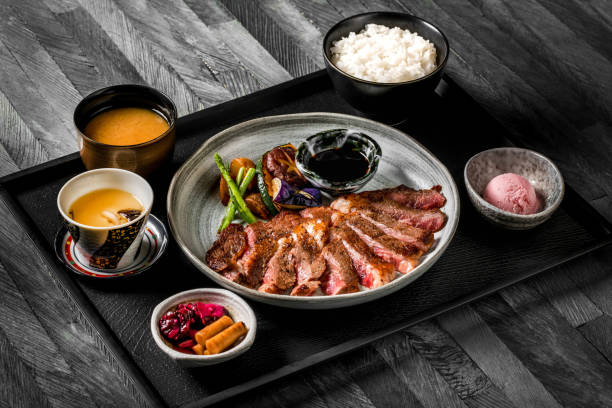Do you have a new idea for a restaurant? Not sure where to begin? It turns out, now is a good time to start your restaurant. Research has shown that the foodservice sector is growing rapidly and will reach $4.2 trillion by 2024.
The idea of owning an F&B business can seem daunting, especially considering the dire outlook for start-ups. Research has shown that up to 90% of all new restaurants fail. There is a silver lining: 10% of new restaurants fail.
We’ve put together an 8-step guide for beginners, complete with insider tips, to help you get started.
Create a solid business plan
Before you make any investment, it is important to do thorough research. Spend some time researching the foodservice industry, including your target customers, competitors, and current trends. Then, you can start to write a business plan for investors. It’s like exploring the 4C’s of food service: customer, consumer channel, channel, context.
This is why you will need to:
- Define your target audience: Who are you targeting? Once you have defined your target market, you need to understand their buying habits, the reasons they buy, from which they purchase, and what motivates them. This will allow you to create a targeted, relevant offering.
- Identify your USP. This will help you stand out from the crowd. Take a look at your competitors and determine your competitive advantage. It doesn’t have to be revolutionary, but it must be relevant. If you target young families, it could be sufficient to create a child-friendly restaurant with healthy meals.
- Select your restaurant style. Are you considering opening a bakery or coffee shop? Each channel requires a different approach, operating hours, and investment. Make sure you choose the right one for you and your work schedule.
- Choose your food type/menu offering. Think carefully about what you want to include on your menu. You can find out the latest trends in food and drink, especially for your market, so you can tailor your menu to suit them. The hottest trends include vegetarian/vegan menus, gluten-free and allergy-friendly menu options, and sourcing local produce.
- Define your brand. Your branding includes your logo, imagery, menu design, music played, and uniforms for your staff. It defines what your business stands for and what it is all about. This sets the tone for your restaurant and tells your customers what to expect. Consider how you would like to present yourself and your identity.
After putting together your business plan, go out and test it. Ask your customers to give their opinions and thoughts. This could be as simple as a survey of a few people on the street or a complete market research study.
Secure your financing
Now is the time to organize your finances. Not everyone can afford to open a restaurant. Most don’t.
There are many other funding options that you have to fund your venture.
- Apply for a loan to your business
- Reach out to your family and friends
- Partner with an outside investor or find investors
- Crowdfunding
- Get government aid
Remember that your first profit will likely take many years and that money may be scarce at the beginning. Start small, and you can always scale up later. And choose wisely your business partners because they will be there for a long time.
Choose your location
They say “location, location and location.” It turns out that this is not always true. The location of your business will depend on many factors. You don’t need to choose the most popular retail spot unless foot traffic is your primary source.
These are a few things you should consider.
- Rent Cost: How much can you afford based on your profit and sales projections?
- Accessibility for potential customers: How can your customers get to your restaurant by foot, car, or public transport?
- Restrictive ordinances Some neighbourhoods have strict noise restrictions or restrictions regarding when your suppliers can deliver your produce.
- Your proximity to other businesses: Competitors and other businesses can impact your traffic. So map out the world around you and see how it might affect your business.
- Future Planning: Consider what your neighbourhood will look like in 2-5 years. Also, consider any major developments that could alter the local landscape.
Layout your space
Once you’ve chosen a venue, it is time to plan the layout.
This will vary depending on what type of establishment you run. Typically, restaurants allocate 45-60% to the dining area, 35% to the kitchen, and the rest to storage and office space.
You should carefully consider the layout of your kitchen, dining area and living room. It is important to allow your chefs enough space for prep, so ensure they have plenty of room to prepare, garnish, and decorate their dishes.
Don’t compromise on your dining space. It is where the magic happens. Therefore, it is crucial to create the right atmosphere and decor that makes your customers feel at home.
Choose your suppliers
You’ll work with many different suppliers as a restaurateur – from furniture to POS systems, bar equipment, and kitchen appliances, to name a few. You will need to create a wish list and a budget before starting looking for partners. While you shouldn’t compromise on quality, high-priced suppliers could reduce your margins and make your business run ragged. Make sure you negotiate hard.
But where should you begin your search? You can start by asking for recommendations from other restaurateurs or doing a Google search.
Look for trustworthy suppliers with a track record of delivering quality products and partnerships that have been successful. Be sure to inquire about delivery times and food safety management practices for food suppliers. Local suppliers often have fresher ingredients.
Register for your permits and licences
Every country, each county, and every city has its regulations. However, it is important to check with your local regulatory offices and get legal counsel to ensure compliance with all local food and health regulations. Some licenses may take several months to obtain, so get moving on this process as soon as possible.
Start hiring your employees.
Consider the staff that you will need for your particular restaurant. Based on your restaurant’s size, these might include HR managers, purchasing specialists, accountants or marketing & sales manager, chefs and sommeliers, as well as waiters, hostesses, bartenders, and cleaning and dish-washing personnel. Hire enough people for each job and plan shifts and backups in the event of sickness or vacations.
Candidates with enough experience and a track record of success are the best candidates. They should multitask, be efficient, and be quick to think. Your employees must work under pressure and have excellent social skills.
You can’t be too cautious when hiring staff. Do background checks and conduct multiple face-to-face interviews. Call their references.
Advertise your business
Advertising is a must before you open your restaurant.
While word of mouth is still the most effective form of publicity, there are other options you may like to consider when announcing your venture.
- Create a great website. Make sure it is easy to use and contains important information such as opening hours, menus, booking engines, and any special requests.
- Social media: Create accounts on Facebook, Twitter and Linkedin, and share relevant news, photos and behind-the-scenes information about your restaurant as you prepare for opening day.
- Place an advertisement in your local newspaper (or online news platform).
- Have a soft opening. This is a great way to get some practice before your opening day. It will also create a buzz in your community about your restaurant. Consider limiting the guest list and having a soft opening for friends and family, then for local businesses or partners.
- Give promotions to new customers: Offer a free drink or dessert to the first 10, 50, or 100 customers. You’ll be remembered as someone generous and warm. Free stuff is a great thing, after all.
We leave you with this last tip: Work hard, don’t quit, and be willing to take risks. Although it will be difficult to start a new venture and likely a long, hard battle, the reward is greater than victory.




